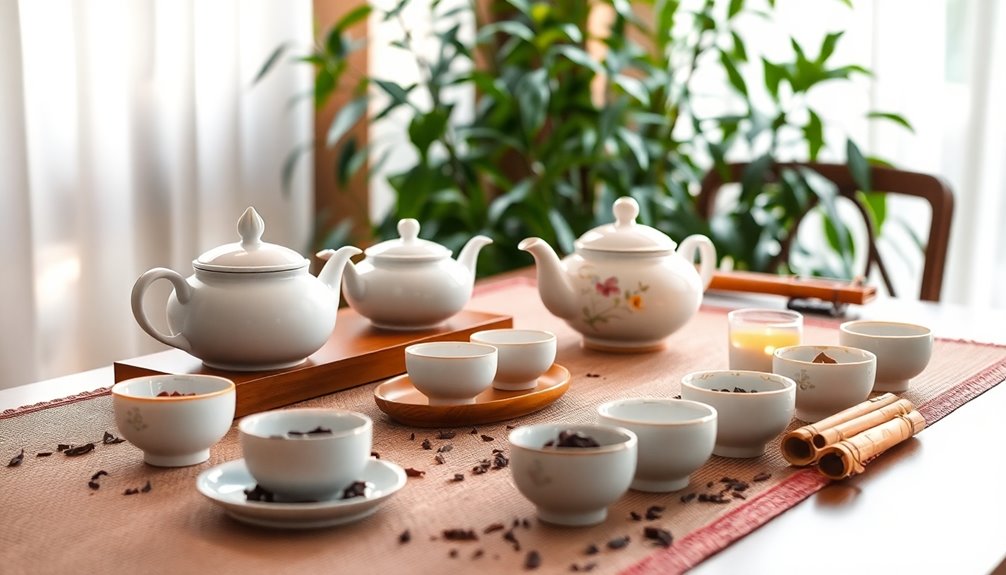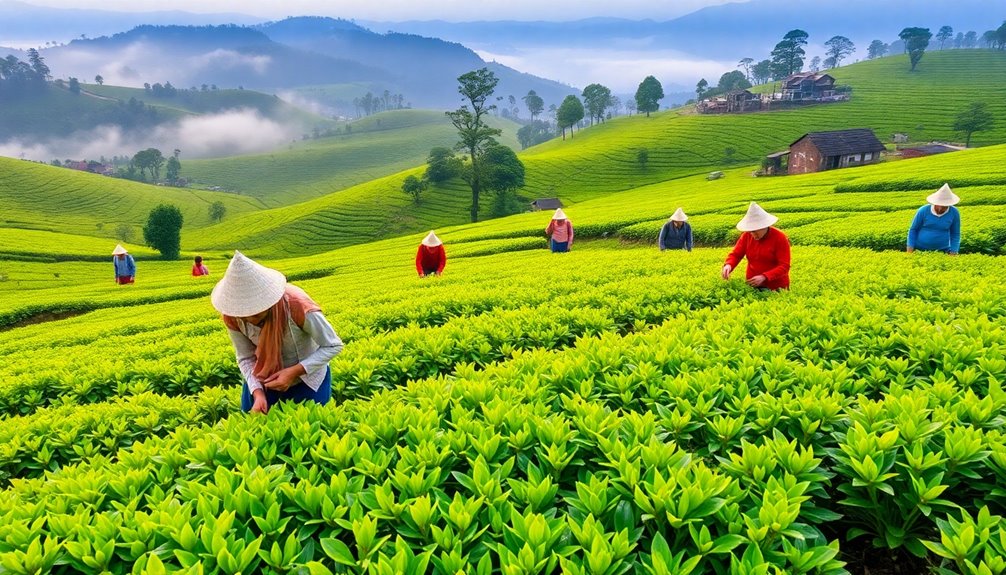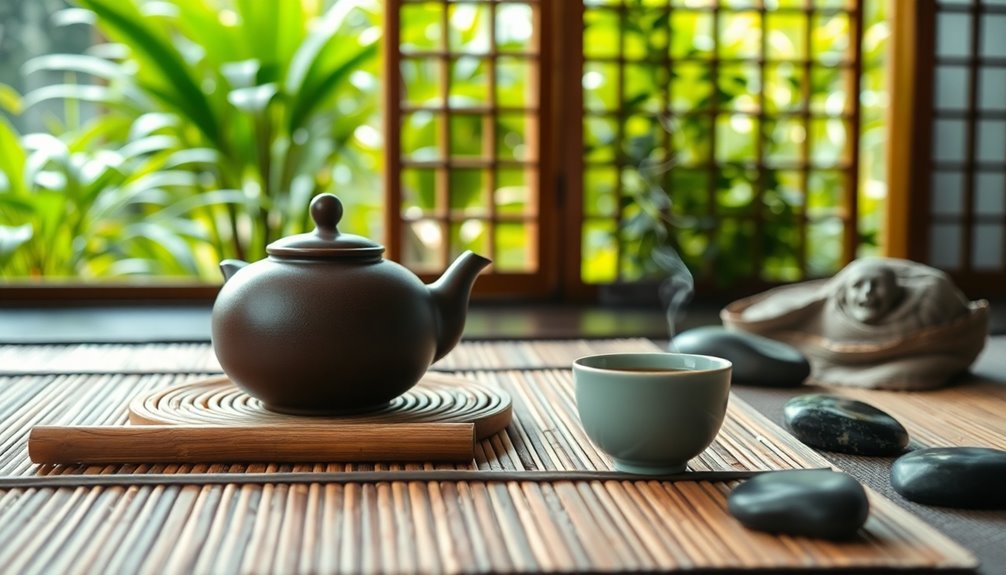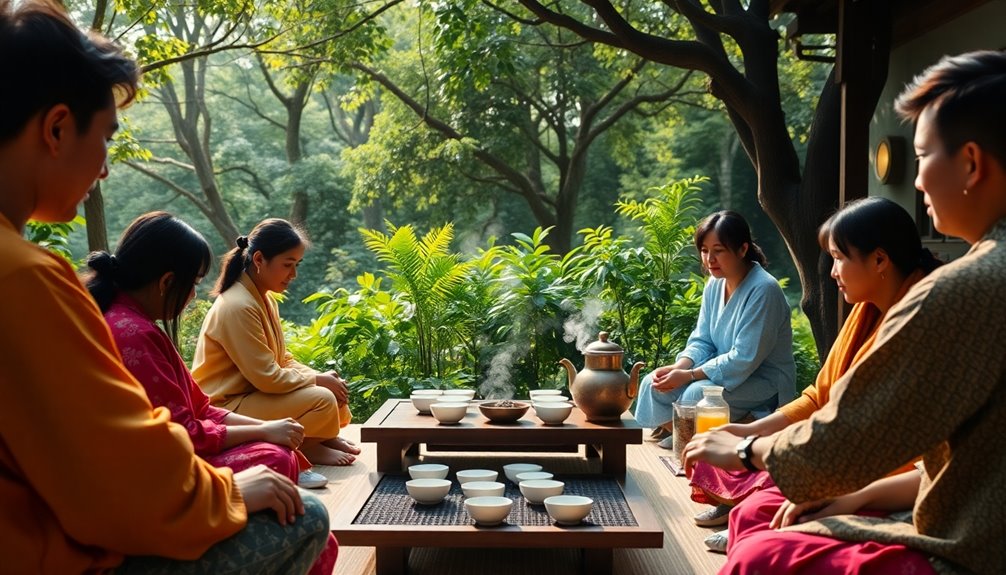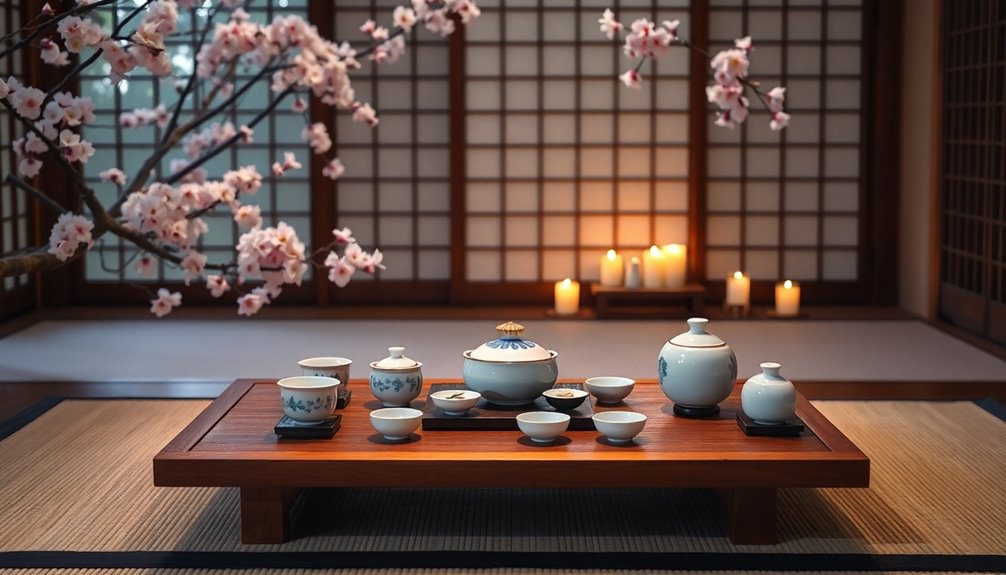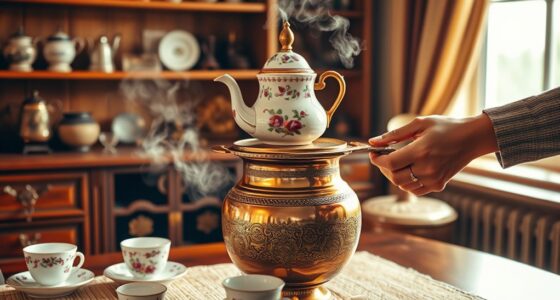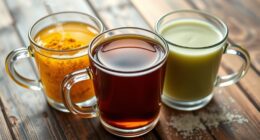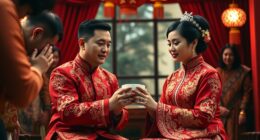To perform a Chinese tea ceremony, start by choosing meaningful teas like red tea for good fortune or green tea for health. Set up a beautiful tea arrangement including cups and a teapot. Begin by pouring tea for your parents and elders, showing respect and love. Each sip symbolizes family unity, so be sure to include everyone in the ceremony. You can add personal touches like sweeteners or unique tea blends. As you embrace this tradition, you'll feel the excitement of connecting with family. Stick around, and you'll discover more tips to make your ceremony even more special!
Key Takeaways
- Begin by selecting a suitable venue that accommodates family and friends, ensuring a respectful atmosphere for the ceremony.
- Choose traditional teas like red tea for prosperity, oolong for harmony, or green tea for health to serve during the ceremony.
- Prepare symbolic foods such as dried dates and lotus seeds to emphasize cultural meanings while serving tea to elders.
- Involve both the bride and groom in serving tea to parents and elders, symbolizing respect and blessings.
- Consider modern adaptations, such as personalized tea blends and attire that fuse contemporary styles with traditional elements.
Introduction
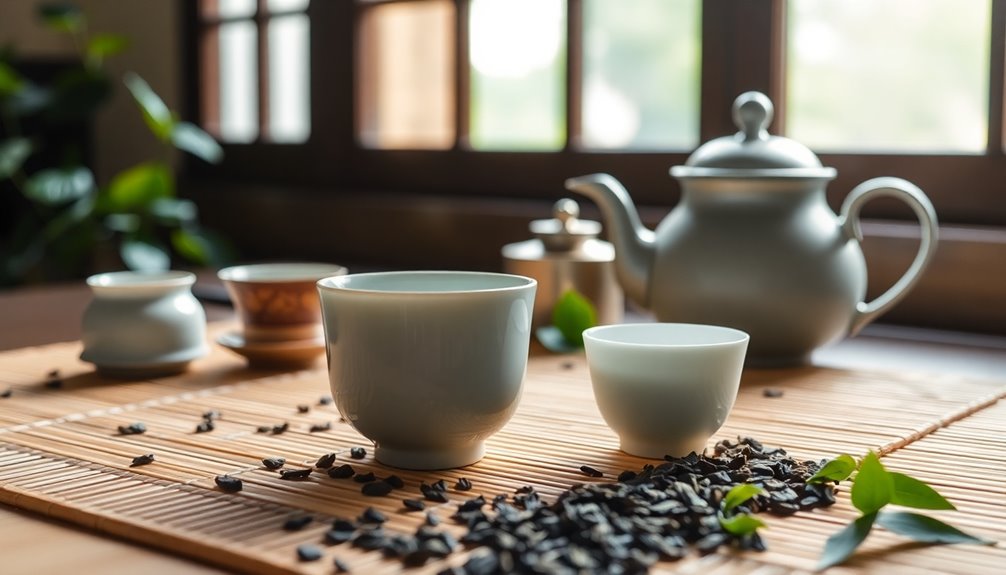
In the heart of Chinese culture lies the Tea Ceremony, or cha dao, a beautiful tradition that embodies respect for family and heritage. This ceremony is especially important during weddings, where the bride and groom serve tea to their parents and elders. It's a touching moment filled with blessings, as family members offer gifts, like red envelopes, in return.
To prepare for the Chinese tea ceremony, you'll need a special tea set, beautifully decorated with red, symbolizing good luck. The ceremony usually takes place before the main wedding events, creating a strong emotional connection between families and celebrating unity.
As the couple serves tea, they must follow proper etiquette, which means serving in order of seniority and using both hands. This shows respect and gratitude to their elders.
Alongside the tea, you may want to include symbolic foods, such as dried dates and lotus seeds, which carry deep cultural meanings. By participating in this ceremony, you honor your family and recognize the importance of heritage.
You'll find that the Chinese tea ceremony isn't just a ritual; it's a heartfelt way to celebrate love and respect within your family.
Cultural Significance of Tea
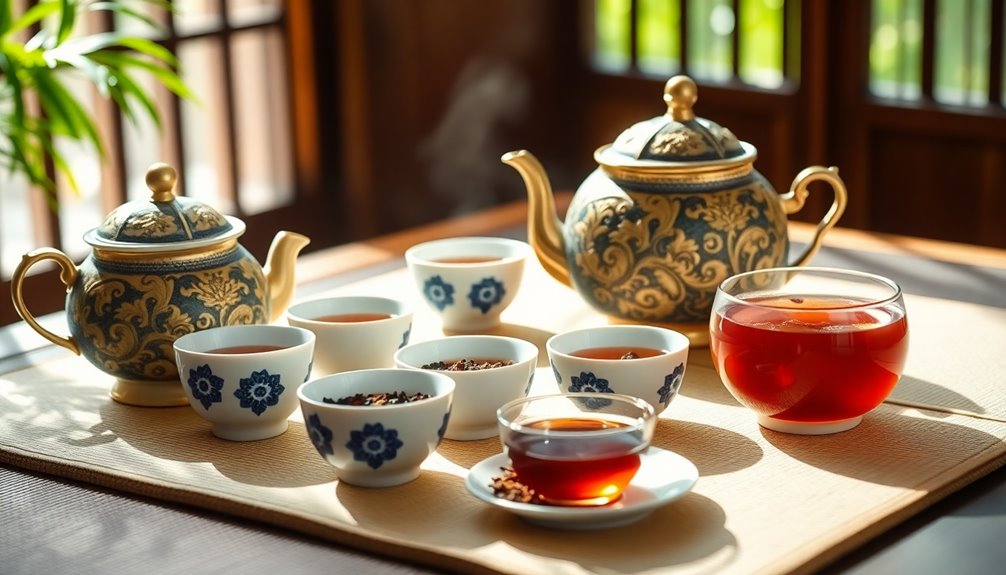
Tea holds a revered place in Chinese culture, serving as more than just a beverage; it embodies respect, tradition, and connection across generations. For thousands of years, tea, known as cha in Chinese, has been integral to social and cultural practices. Its earliest records date back to the Tang dynasty, showcasing its importance in daily life.
In Chinese weddings, serving tea is a heartfelt gesture that shows respect for elders. This act strengthens familial bonds and unity, making it a significant moment for families. The ceremony also celebrates cultural heritage, creating lasting memories and connections.
During these gatherings, certain teas symbolize blessings like long life and fertility, adding emotional significance to the occasion. The tea ceremony honors not only ancestors but also the shared history of families, acting as a cultural bridge during key life events.
Participating in a Chinese tea ceremony lets you experience the richness of tradition and the warmth of connection.
Whether you're at a wedding or a family gathering, you'll find that tea brings everyone together, reminding you of the beauty in respecting your roots and celebrating love.
Traditional Tea Types Used
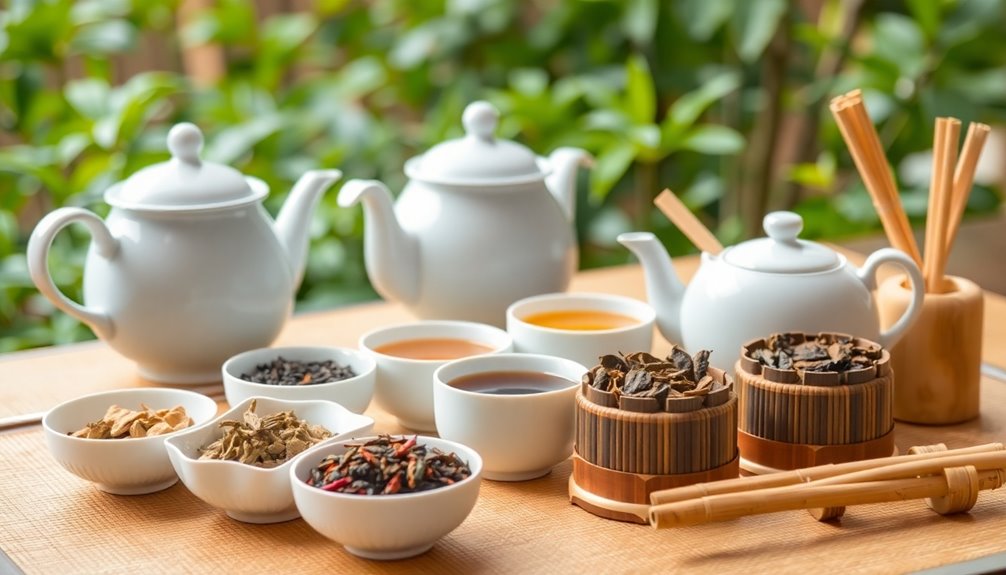
Often, traditional Chinese wedding tea ceremonies feature a selection of specific teas that hold deep cultural significance. One of the most popular choices is red tea, also known as black tea. This tea symbolizes prosperity and good fortune, making it a perfect fit for such a joyous occasion.
You might also encounter oolong and green tea during the ceremony, as each represents unique blessings—oolong for harmony and green tea for health.
When serving tea, it's common to sweeten it with delightful ingredients like dried longan, lotus seeds, and red dates. These additions not only enhance the flavor but also signify wishes for fertility and a sweet life together.
The choice of tea can vary by region, with different areas in China favoring specific blends that reflect local customs.
Modern Adaptations of Traditions
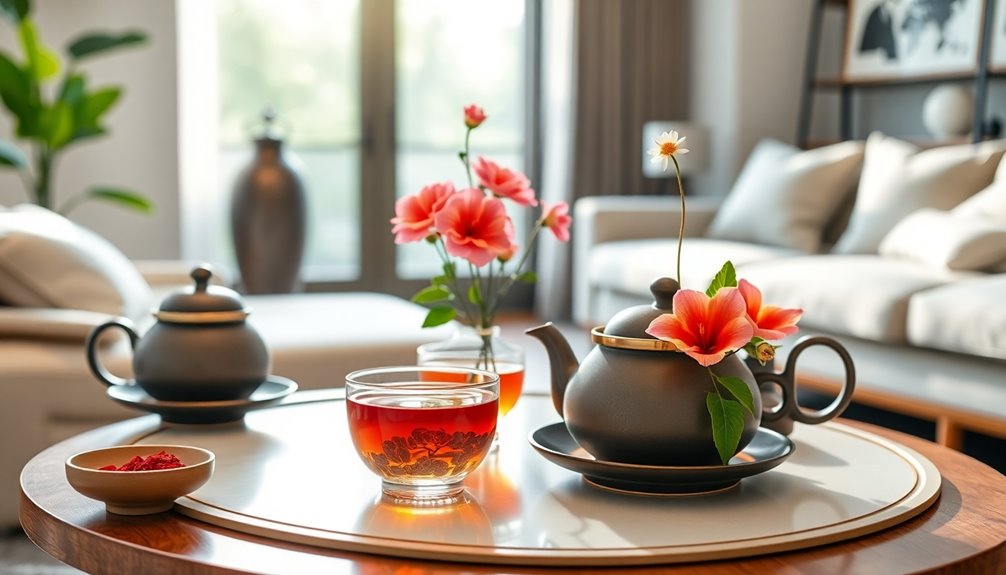
Many couples today are blending modern elements with traditional Chinese tea ceremonies, creating a unique experience that reflects their personal style and cultural heritage.
You might choose to host your ceremony at a single location, like a wedding venue, which simplifies logistics and enhances guest participation. This way, everyone can join in the celebration, whether near or far.
Incorporating personalized tea blends can add a fun twist while keeping essential traditional elements, like red envelopes and blessings, alive.
You can also adapt your attire, mixing contemporary styles with traditional colors, especially the auspicious red. This allows you to honor your roots while expressing your individuality.
Technology plays a key role in modern Chinese tea ceremonies too. With video calls, family members who can't attend in person can still be part of the special day.
This connection strengthens family bonds, no matter the distance.
Generational Differences in Customs
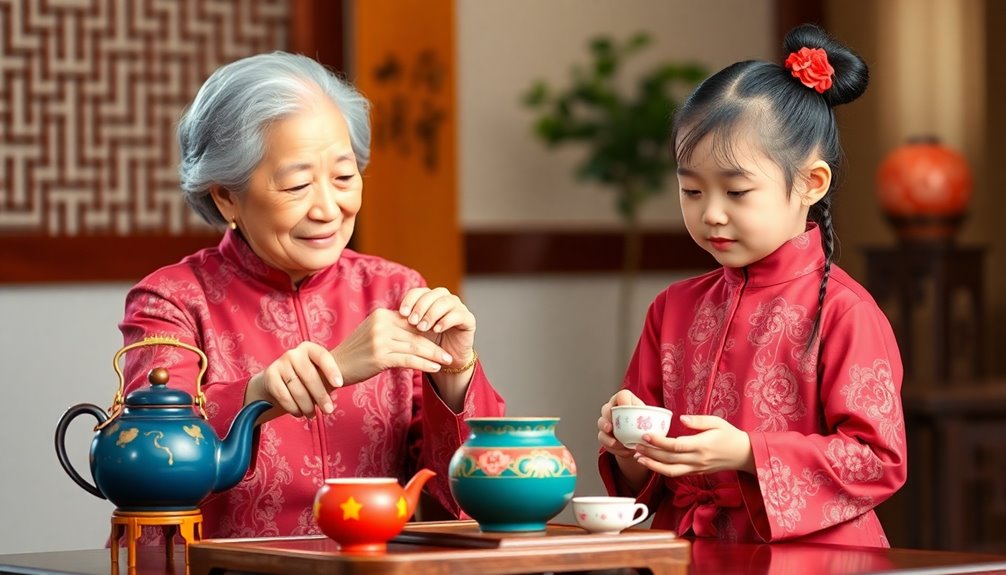
In today's diverse cultural landscape, generational differences in Chinese tea ceremonies are becoming increasingly evident. While older generations emphasize strict adherence to traditional practices, younger couples often infuse modern elements into the ceremony.
You might notice that younger couples use contemporary tea sets or mix Western-style wedding elements with their tea traditions, creating a unique blend of styles.
The significance of the teas served can also differ. Older family members typically prefer classic choices, while younger couples might choose unique blends or flavors that reflect their personalities.
Involving family members can showcase these generational differences too. Traditionally, only elders serve tea, but younger couples might invite friends or peers to participate, making the experience more inclusive.
Attire choices highlight these shifts. Older generations lean toward classic red garments, symbolizing good luck, while younger couples may sport a mix of traditional attire and modern fashion trends.
This blend offers a fresh take on the ceremony, emphasizing personalization and creativity. By recognizing these generational differences, you can appreciate the evolving nature of Chinese tea ceremonies, making your experience richer and more meaningful.
Practical Applications
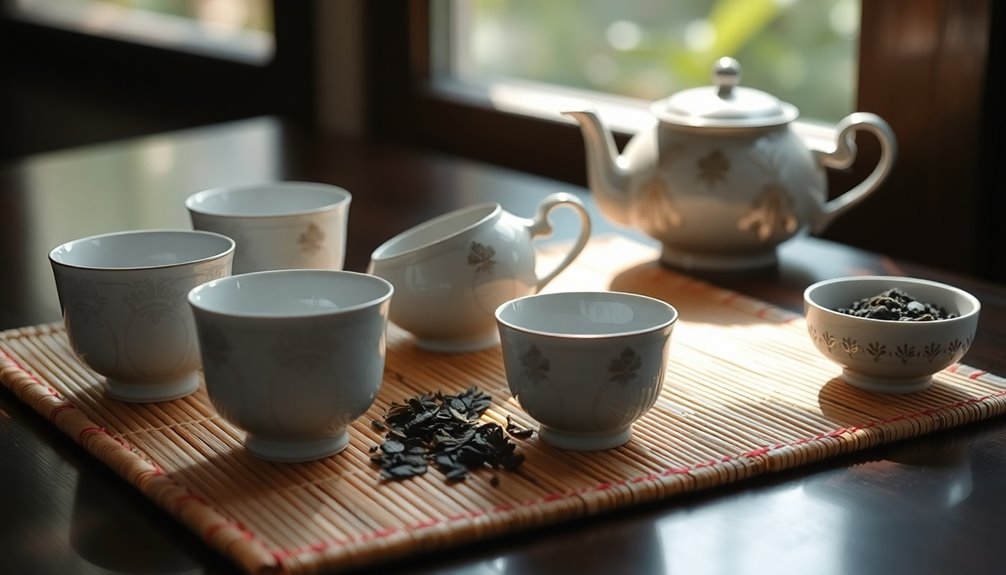
When planning a Chinese tea ceremony, choosing the right venue is crucial. You'll want a space that accommodates all guests comfortably while reflecting the joy of the occasion.
Decorate with red accents, which symbolize good fortune, and set up chairs and kneeling pillows for the ceremony.
Prepare essential items like a traditional Chinese tea set, kettle, and a selection of teas. Sweet red tea infused with dried dates and lotus seeds is a great choice for added symbolism.
When it's time to serve tea, follow the order of seniority. Start with the groom's immediate family, then move to the bride's family. The groom kneels as he serves tea, showing respect to elders.
Both the bride and groom should hold tea cups with two hands as a sign of honor.
During the tea serving, incorporate traditional blessings like "百年好合" (happy marriage) to enhance the emotional significance for everyone involved.
After serving tea, expect to receive red envelopes (hong bao) from elders, containing money or jewelry, representing well wishes and blessings for your future together.
Enjoy this meaningful Chinese wedding tradition!
Frequently Asked Questions
What Is the Process of the Tea Ceremony?
The tea ceremony process involves kneeling, serving tea to family in order, presenting cups with both hands, receiving blessings or gifts, and concluding with gratitude to elders, symbolizing respect and family unity.
How Much Do Parents Give for a Tea Ceremony?
When it comes to how much parents give during a tea ceremony, expect auspicious amounts like $88 or other lucky figures. They often consider family traditions and personal circumstances when selecting the gift.
Who Goes First in Chinese Tea Ceremony?
In a Chinese tea ceremony, the groom's family goes first. You serve tea to his parents, then grandparents, followed by other elders. This order shows respect and honors family contributions to your union.
How Do You Perform a Tea Ceremony Ritual?
To perform a tea ceremony ritual, gather your family, prepare a traditional tea set, serve tea in order of seniority, present cups with respect, and thank everyone for their blessings and support afterward.
Conclusion
Now that you've learned about the Chinese tea ceremony, you're ready to try it yourself! Remember, it's not just about the tea; it's about sharing moments with friends and family. Gather your favorite tea, set up your space, and enjoy the rich traditions. Whether you stick to the classic methods or add your own twist, each ceremony can be special. So, pour your tea, take a deep breath, and savor the experience. Happy brewing!

